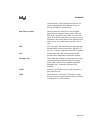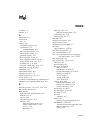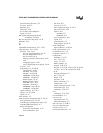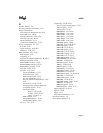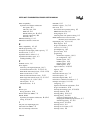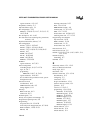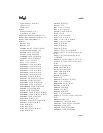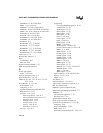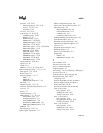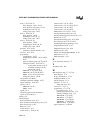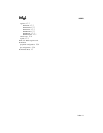
Index-5
INDEX
operation, 9-4–9-16
overview, 9-1
programming, 9-15–9-32
considerations, 9-32
ICW1, 9-20, D-28
ICW1 register, 9-20
ICW2, 9-21, D-29
ICW2 register, 9-21
ICW3, 9-22, 9-23, D-29, D-30
ICW3 register, 9-22, 9-23
ICW4, 9-24, D-30
ICW4 register, 9-24
IERn, 11-27, D-32
IIRn, 11-28, D-33
INTCFG,
5-10, 9-19, D-34
INTCFG register, 9-19
OCW1, 9-25, D-40
OCW1 register, 9-25
OCW2, 9-26, D-41
OCW2 register, 9-26
OCW3, 9-27, D-42
OCW3 register, 9-27
P3CFG register, 9-18
POLL, 9-28, D-49
POLL register, 9-28
register addresses, 4-16, 4-17, D-2, D-3
registers, 9-15–9-17
signals, 9-5
spurious interrupts, 9-30
Interrupt priority, 9-6–9-8
Interrupt service routine, 6-23
Interrupts and exceptions, relative priority, 7-7
J
JTAG reset, 8-12
JTAG test-logic unit, 18-1–18-14
block diagram, 18-2
design considerations, 18-14
operation, 18-3–18-9
boundary-scan register, 18-9
bypass register, 18-8
identification code register, 18-8
instruction register, 18-7
test access port controller, 18-4–18-6
instructions, 18-7–18-8
state diagram, 18-6
overview, 18-1–18-2
Resetting upon power-up, 18-3
testing, 18-10–18-11
bypassing devices on a board, 18-10
disabling the output drivers, 18-11
identifying the device, 18-10
sampling device operation and preloading
data,
18-10
testing the interconnections, 18-10
timing information, 18-12–18-13
L
Literature, 1-8
Literature, ordering, 1-5, 1-8
LOCK#, 6-34–6-35
lockout sequence, 17-4
M
Manual contents, summary, 1-1–1-2
Measurements, defined, 1-3
Misaligned data transfers, 6-9
Mode, 12-22
N
Naming conventions, 1-3–1-4
Non-page mode, 15-13
Nonspecific EOI command, 9-14
Notational conventions, 1-3–1-4
Numbers, conventions, 1-3
O
Operand alignment
aligned,
6-9
misaligned, 6-9
Operating mode, 9-8
P
Page mode, 15-12
Paging Unit, 3-4, 3-5
PC/AT Address, defined, 1-4
PC/AT system architecture, departures from, B-1
Performance, 2-1
Peripherals, internal
configuring,
5-3–5-37
DOS compatible, 4-2
embedded application-specific, 4-2



